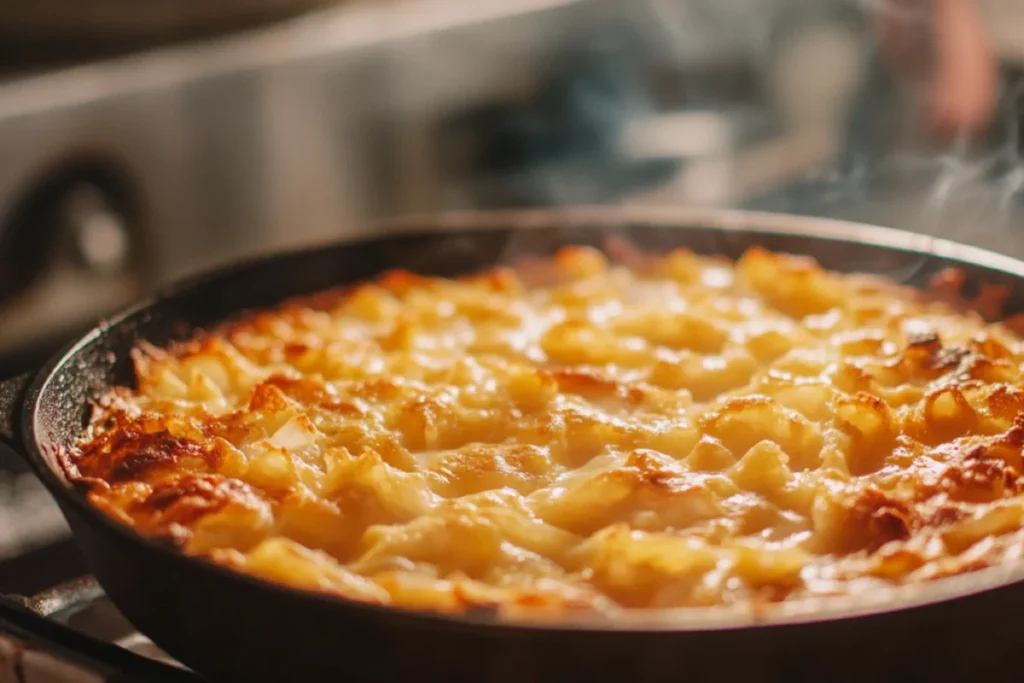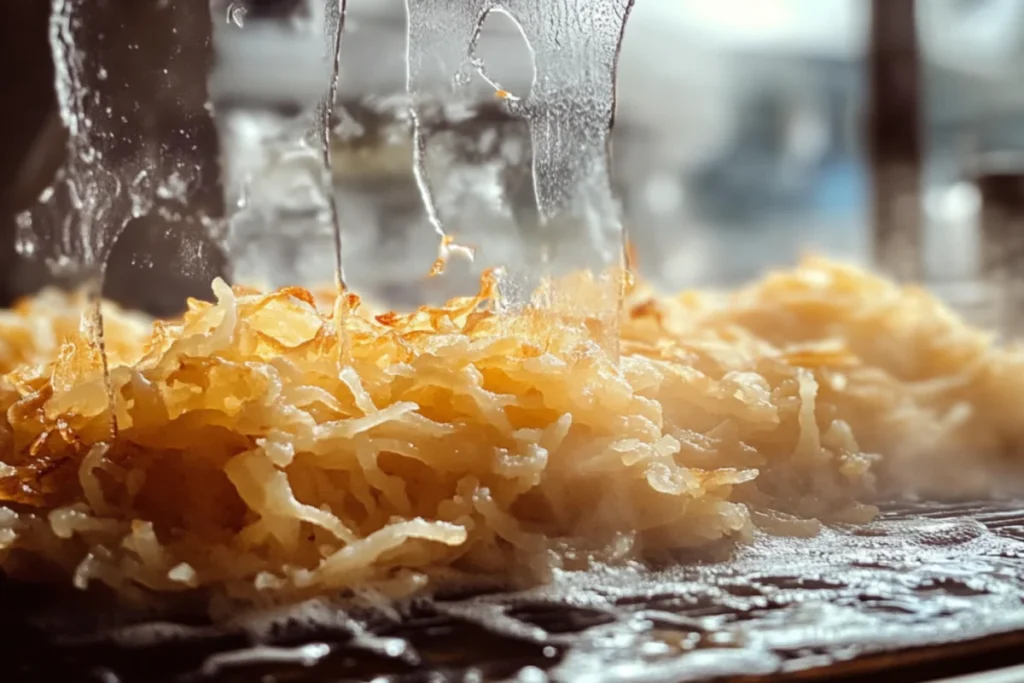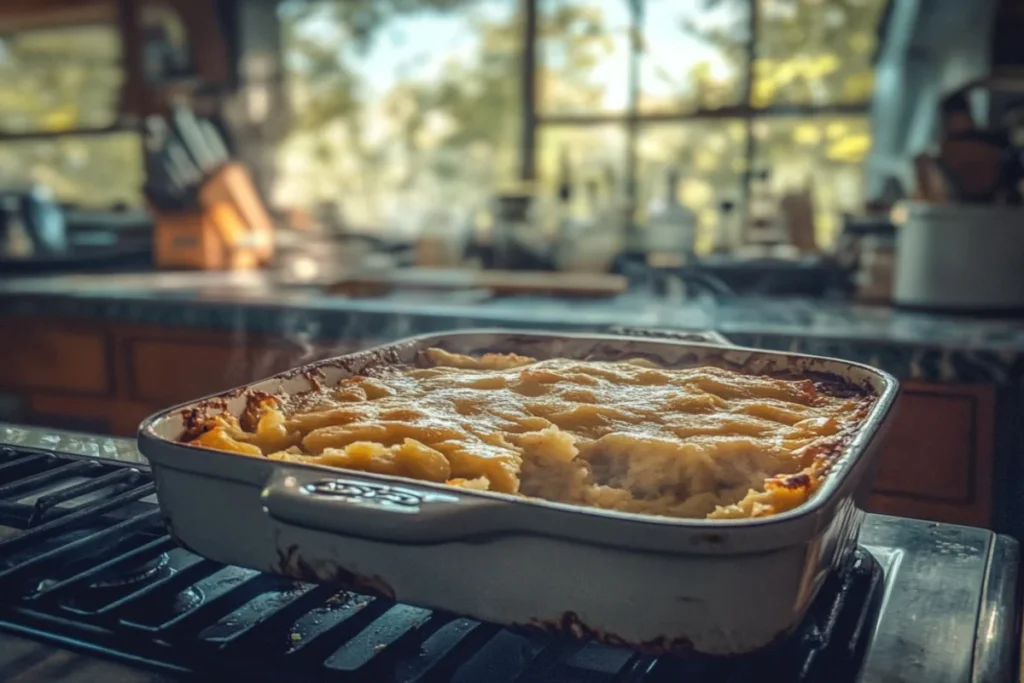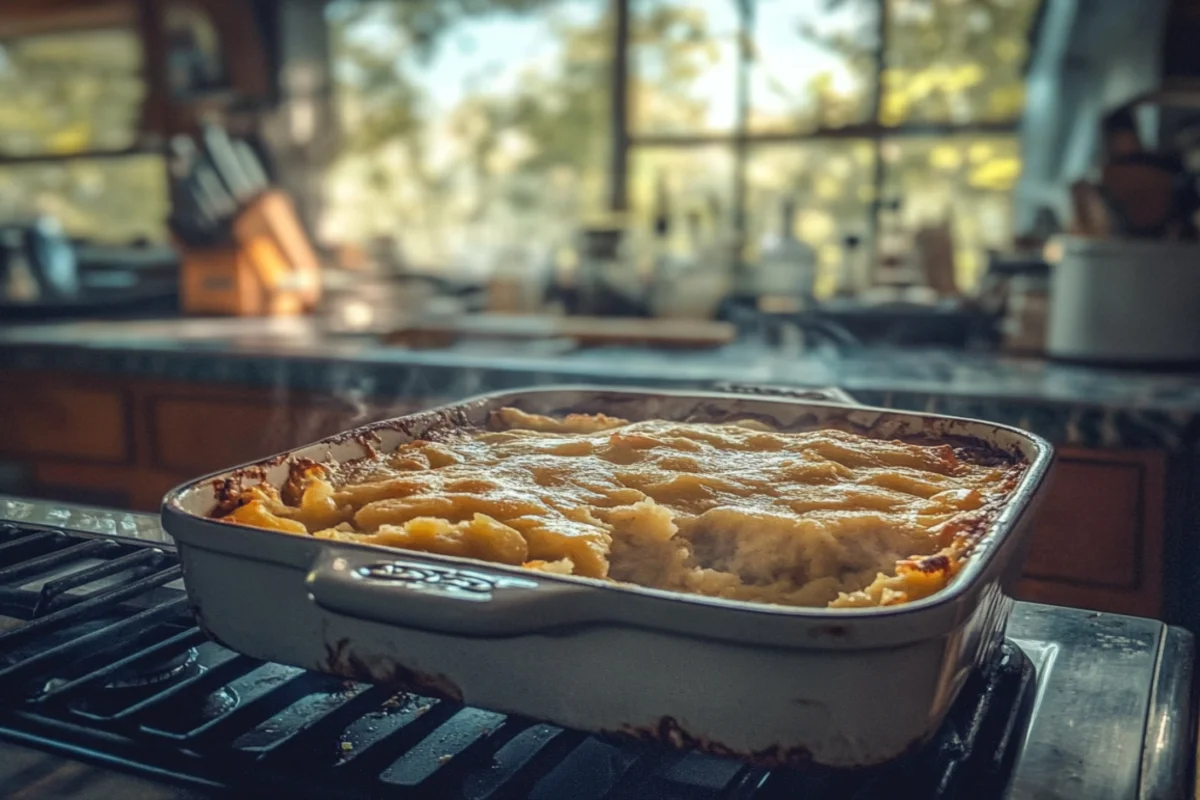
Introduction
Hashbrown casserole is a comforting and versatile dish enjoyed by many, whether as a breakfast treat or a hearty dinner side. However, achieving the perfect texture can be a challenge, especially when it turns out soggy. This guide dives deep into the reasons why your hashbrown casserole might be soggy and offers actionable tips to fix and prevent this common issue. From choosing the right potatoes to adjusting baking techniques, you’ll learn everything you need to create a dish that’s crispy, flavorful, and satisfying.
Part 1: Understanding the Problem
Introduction to Hashbrown Casserole
Hashbrown casserole is a beloved staple at family gatherings and potlucks. This dish combines shredded or diced potatoes, creamy sauces, and various toppings to create a flavorful masterpiece. But here’s the kicker: while it sounds simple to prepare, the results can vary. A soggy casserole is often the result of too much moisture, throwing off the expected texture. Understanding why this happens is the first step toward perfecting your recipe.
Common Causes of Sogginess in Hashbrown Casserole
There are several culprits behind a mushy hashbrown casserole. Let’s take a closer look at what might be going wrong:
- Excess Moisture in Potatoes: Whether you’re using fresh or frozen hashbrowns, failing to remove water can lead to soggy results. Potatoes naturally contain water, and frozen varieties might carry additional ice crystals.
- Improper Thawing of Frozen Hashbrowns: Skipping proper thawing techniques leaves your hashbrowns overly wet. This issue compounds when combined with liquid ingredients in the recipe.
- Overuse of Liquid Ingredients: Cream soups, milk, or heavy cream are essential for flavor, but too much can make the mixture watery instead of creamy.
- Inadequate Cooking Times: Undercooking your casserole doesn’t allow liquids to evaporate, resulting in a wet, underdone texture. The top may look ready, but the inside could still be swimming in moisture.
- Using the Wrong Baking Dish: Believe it or not, your choice of bakeware matters. Dishes that are too deep trap heat unevenly, leaving the center soggy while the edges overcook.
Learning from these mistakes can transform your casserole game entirely. For instance, when you’re mindful of potato preparation, you’ll notice a significant improvement in texture. If you’re looking for detailed tips, check out this guide to fixing soggy hashbrown casseroles.
Understanding these challenges is key to ensuring your next attempt at making this classic dish is a resounding success. Armed with this knowledge, you’re ready to explore solutions that will take your hashbrown casserole from “eh” to exceptional.
Part 2: Ingredient Selection and Preparation
Choosing the Right Potatoes
The type of potato you use plays a pivotal role in determining whether your casserole ends up soggy or perfectly crisp. Potatoes come in various types, and their starch and water content differ significantly.
- Waxy Potatoes vs. Starchy Potatoes: Waxy potatoes, like red or Yukon gold, have lower starch content and hold their shape well but may retain more moisture. On the other hand, starchy potatoes like russets are ideal for hashbrown casseroles because they absorb liquid better, creating a fluffier texture.
- Pre-shredded vs. Fresh Potatoes: While pre-shredded frozen hashbrowns are convenient, they can carry excess water. Freshly grated potatoes can be a better option as long as you take the time to drain and pat them dry thoroughly.
Proper Thawing Techniques for Frozen Hashbrowns
When it comes to frozen hashbrowns, thawing them the right way can make or break your casserole’s texture. Here’s a step-by-step approach to ensure they’re ready for use:
- Remove from Packaging: Place the frozen hashbrowns in a large bowl to allow for even thawing.
- Thaw Gradually: Let them sit in the refrigerator for several hours or overnight to prevent uneven thawing or ice melting directly into the potatoes.
- Drain Excess Water: After thawing, transfer the hashbrowns to a colander and press gently with a spatula to squeeze out any remaining moisture.
- Pat Dry: Use a clean kitchen towel or paper towel to dry the hashbrowns thoroughly.
Skipping these steps often leads to an overly wet base, which is one of the primary reasons behind a soggy hashbrown casserole.
Managing Liquid Ingredients
While creamy soups, milk, and cheeses add richness to the dish, too much liquid can wreak havoc on the texture. Balance is key!
- Stick to Measured Quantities: Follow recipe guidelines closely, especially for cream-based soups and milk. Overpouring even a small amount can result in a runny dish.
- Consider Alternatives: Greek yogurt or sour cream can replace heavier liquids like milk while maintaining the dish’s creamy consistency without adding too much moisture.
- Drain High-Moisture Ingredients: If you’re adding other elements like sautéed vegetables or mushrooms, make sure they’re pre-cooked and drained to prevent excess liquid from seeping into the casserole.
Using these preparation techniques ensures that the base of your casserole remains stable, setting the stage for an even bake. The time spent on ingredient prep is well worth the end result—a perfectly textured hashbrown casserole.
Part 3: Cooking Techniques

Pre-Cooking Potatoes to Reduce Moisture
Sometimes, even after thawing and drying, potatoes can retain more moisture than desired. Pre-cooking them is a game-changer for ensuring a crispy hashbrown casserole. This step not only reduces water content but also enhances flavor and texture.
- Parboiling Fresh Potatoes: For fresh potatoes, a quick boil can help remove excess starch and water. Boil them for about 5–7 minutes, then let them cool completely before shredding.
- Sautéing Frozen Hashbrowns: If using frozen hashbrowns, sautéing them in a pan with a small amount of oil can remove moisture and create a light crispiness, preventing sogginess when baked.
- Using the Oven to Pre-Dry: Spread the hashbrowns on a baking sheet and bake them at a low temperature (around 250°F/120°C) for 10–15 minutes. This method helps evaporate moisture while preserving the potatoes’ structure.
Optimal Baking Practices
Baking plays a crucial role in creating the perfect hashbrown casserole. Without the right techniques, even well-prepared ingredients can fall flat. Follow these guidelines for an evenly cooked, golden-brown casserole:
- Preheating the Oven: Always preheat your oven to the recommended temperature. Most recipes suggest baking at 350°F (175°C), but confirm with your specific recipe.
- Layering Ingredients Evenly: Spread the mixture evenly in the baking dish. Uneven layers can cause undercooked portions in the middle or overly crispy edges.
- Avoid Overloading the Dish: A casserole that’s too thick takes longer to cook through, which often leaves the center soggy. Aim for a depth of about 2 inches for even cooking.
- Mid-Bake Adjustments: Halfway through baking, check on your casserole. If the edges look done but the center is still undercooked, cover the dish loosely with foil to allow the center to cook without over-browning the top.
Utilizing Appropriate Baking Dishes
The choice of your baking dish might seem trivial, but it significantly impacts the final result. Different materials and depths distribute heat differently, influencing texture and cooking time.
- Glass vs. Metal Pans: Glass dishes retain heat well and are ideal for casseroles, while metal pans cook faster but may cause uneven heat distribution if too thin.
- Shallow vs. Deep Dishes: A shallow baking dish ensures that the casserole cooks evenly, while deeper dishes often trap moisture, leading to sogginess.
- Non-Stick Coatings: If your baking dish isn’t non-stick, consider greasing it lightly to avoid sticking without adding unnecessary moisture.
These techniques, combined with careful monitoring during the bake, ensure your hashbrown casserole comes out evenly cooked with a delightfully crispy topping.
Part 4: Additional Tips and Variations
Incorporating Binding Agents
Binding agents are the secret to holding your casserole together while preventing it from becoming mushy. They provide structure and ensure the ingredients cook evenly without excess moisture pooling in the dish.
- Eggs as a Primary Binder: Eggs are one of the best options for keeping your casserole cohesive. Whisked eggs evenly distributed throughout the mixture help achieve a firm, creamy texture. For a standard recipe, 1–2 eggs should suffice.
- Flour or Cornstarch: These dry binders absorb liquid and stabilize the mixture. Adding 1–2 tablespoons of flour or cornstarch can prevent your casserole from becoming overly wet.
- Cheese as a Double-Duty Ingredient: Shredded cheese not only enhances flavor but also acts as a mild binder. Cheddar, mozzarella, or a mix of cheeses work well without overpowering the dish.
Adding Complementary Ingredients

Elevate your casserole by including ingredients that enhance the flavor without introducing unnecessary moisture. Careful selection ensures the dish stays balanced while delighting your taste buds.
- Sautéed Vegetables: Cooked onions, bell peppers, or mushrooms add depth without excess liquid. Make sure to drain them after cooking.
- Cooked Proteins: Shredded chicken, ground turkey, or diced ham (non-bacon options) can add heartiness to your casserole. Pre-cooking the meat ensures it doesn’t release juices into the dish.
- Herbs and Spices: A sprinkle of fresh parsley, paprika, or garlic powder can elevate the flavor profile without adding moisture.
These additions not only prevent sogginess but also allow for endless customization, making your casserole a versatile crowd-pleaser.
Topping Options for Added Texture
One of the best parts of a hashbrown casserole is its topping. A perfectly crispy layer contrasts beautifully with the creamy interior, adding a satisfying crunch.
- Breadcrumbs: Sprinkle seasoned breadcrumbs over the casserole before baking. For extra crunch, combine them with melted butter before applying.
- Crushed Cornflakes or Crackers: Cornflakes and crackers are classic options that provide texture without additional moisture. Lightly coat them with butter to prevent burning.
- Shredded Cheese: Adding a layer of cheese on top not only enhances the flavor but also creates a golden, bubbly crust when baked.
Applying toppings correctly ensures they crisp up rather than becoming soggy. Spread them evenly and apply just before baking for the best results.
By incorporating these tips and variations, you can transform a basic casserole into a culinary masterpiece. Each adjustment adds something unique, ensuring your dish is both delicious and visually appealing.
Part 5: Frequently Asked Questions (FAQs)
How do I fix a soggy hashbrown casserole after baking?
If your casserole is already baked and turns out soggy, don’t worry—there are ways to salvage it. First, uncover the dish and place it back in the oven. Bake it at 375°F (190°C) for 10–15 minutes to evaporate excess moisture. Alternatively, switch the oven to broil for the last few minutes to crisp up the top and edges. However, be careful not to overcook, as this can dry out the dish.
Can I use fresh potatoes instead of frozen hashbrowns?
Absolutely! Fresh potatoes can make a wonderful hashbrown casserole. However, they require a bit more prep work. After shredding the potatoes, soak them in cold water for about 15 minutes to remove excess starch. Drain them thoroughly and pat dry with a kitchen towel before incorporating them into your recipe. This step ensures that the fresh potatoes don’t add unwanted moisture to the dish.
Is it necessary to thaw frozen hashbrowns before baking?
Yes, thawing frozen hashbrowns is highly recommended. Using them straight from the freezer introduces ice crystals, which melt during cooking and release excess water. Proper thawing—either overnight in the fridge or on the counter for a few hours—prevents this and allows for more even cooking.
How can I make my hashbrown casserole healthier?
There are plenty of ways to create a healthier version of hashbrown casserole. Swap full-fat dairy products with low-fat or plant-based alternatives like almond milk or reduced-fat cheese. Use Greek yogurt instead of sour cream for a protein boost and fewer calories. Additionally, opt for lean proteins like ground turkey or shredded chicken instead of high-fat options. These changes retain the flavor while making the dish lighter.
Can I prepare hashbrown casserole in advance?
Yes! Preparing your casserole ahead of time can be a lifesaver. Assemble the casserole as directed but hold off on baking. Cover it tightly with plastic wrap or foil and store it in the refrigerator for up to 24 hours. When you’re ready to bake, let the casserole come to room temperature for 15–20 minutes before putting it in the oven to ensure even cooking.
What are some common mistakes to avoid when making hashbrown casserole?
Several pitfalls can lead to soggy results or uneven cooking. Avoid these common mistakes:
- Using frozen hashbrowns without thawing or drying them.
- Adding too much liquid to the recipe.
- Skipping pre-cooking techniques like sautéing or parboiling.
- Baking in a dish that’s too deep, which traps heat unevenly.
- Overloading the casserole with toppings, which can weigh it down and create excess moisture.
Learning from these mistakes can make all the difference, ensuring your hashbrown casserole turns out perfect every time.
Part 6: Achieving the Perfect Hashbrown Casserole
Creating the perfect hashbrown casserole doesn’t have to feel like rocket science. By understanding the common causes of sogginess and applying the right techniques, you can consistently produce a dish that’s golden, crispy, and utterly delicious. Here’s a quick recap of what we’ve covered:
- Choose the right type of potatoes, whether fresh or frozen, and always take steps to reduce moisture.
- Proper preparation of ingredients, including thawing and drying hashbrowns, ensures a firm base for your casserole.
- Pre-cooking methods like sautéing or parboiling help minimize water content and enhance flavor.
- Stick to optimal baking practices by preheating the oven, layering evenly, and using the right dish for even cooking.
- Add binding agents like eggs or flour for structure, and incorporate toppings that deliver a satisfying crunch.
When you follow these steps, your hashbrown casserole transforms from a simple comfort dish to a standout star of any meal. Whether you’re preparing it for a special gathering or just a cozy family dinner, these tips and techniques ensure you’ll always serve up a casserole that’s crispy on the outside, creamy on the inside, and bursting with flavor.
With practice, you’ll not only fix the issues that might lead to sogginess but also gain confidence to experiment with ingredients and create new variations of this classic dish. Happy cooking!

